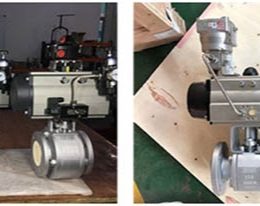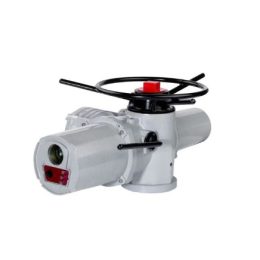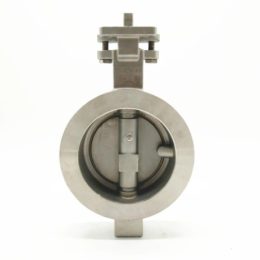Pneumatic Actuated Ball Valve: High-Speed Operation & Versatile Applications

Pneumatic Actuated Ball Valve
A pneumatic actuated ball valve is a valve that uses compressed air to move a ball inside of the valve body. The ball has a hole through the center, so when the valve is opened, fluid can pass through. When the valve is closed, the ball rotates 90 degrees so that the hole is perpendicular to the flow, stopping the flow of fluid. Pneumatic actuation allows for fast operation and precise control, making these valves ideal for a range of applications.
High-Speed Operation: Features and Benefits
One of the most significant advantages of pneumatic actuated ball valves is their high-speed operation. When compared to other types of valves, such as gate or globe valves, ball valves can open and close much more quickly. This fast operation is ideal for applications where rapid flow control is necessary, such as in the petrochemical and pharmaceutical industries. Additionally, the precise control provided by pneumatic actuation allows for accurate dosing and metering of fluids, making these valves ideal for applications where precise control is necessary.
Versatile Applications: Industries and Uses
Pneumatic actuated ball valves are used in a wide variety of industries and applications. They are commonly used in the chemical, petrochemical, and pharmaceutical industries, as well as in water and wastewater treatment facilities and power generation plants. Some common uses for these valves include controlling the flow of liquids and gases, regulating pressure, and preventing backflow. Pneumatic actuated ball valves can also be used in high-temperature and high-pressure applications.
Design and Construction: Materials and Components
Pneumatic actuated ball valves are typically made from materials such as stainless steel, brass, and PVC. The ball inside the valve body is usually made from the same material as the valve body, although some valves may use a different material for the ball, such as ceramic or Teflon. The valve body typically has ports for connecting to the fluid system and ports for connecting to the actuator. The actuator is usually a pneumatic cylinder or diaphragm, although some valves may use an electric or hydraulic actuator.
Maintenance and Troubleshooting: Best Practices
To ensure optimal performance and longevity, pneumatic actuated ball valves require regular maintenance. This includes checking for leaks, cleaning the valve and actuator, and replacing any worn or damaged components. Troubleshooting a pneumatic actuated ball valve typically involves checking the air supply, checking for obstructions in the valve body, and checking for damage to the ball or valve body. It is important to follow the manufacturer’s maintenance and troubleshooting guidelines to ensure safe and reliable operation.
Conclusion: Advantages and Future Developments
Pneumatic actuated ball valves offer a range of advantages, including high-speed operation, precise control, and versatility. As technology continues to advance, there is potential for further development of these valves, such as the use of smart sensors and advanced control systems. With their reliable performance and widespread use, pneumatic actuated ball valves will continue to be a valuable component in fluid control systems.
Pneumatic actuated ball valves are an essential component in industries that require fast and precise flow control. Their versatility and reliable performance make them a valuable choice for a range of applications. By following best practices for maintenance and troubleshooting, these valves can provide years of dependable service. As technology continues to evolve, we can expect to see further advancements in pneumatic actuated ball valve design and control systems.
- Choosing Your Pipeline: The Triple Eccentric Butterfly Valve
- Forged Floating Ball Valve
- Working Principle of Stop Back Valve
- “Understanding Floating Ball Valves: Essential Components for Reliable Fluid Control in Hydraulic Systems”
- Understanding Y Strainers: Function & Importance
- Precautions for Butterfly Valve Installation



